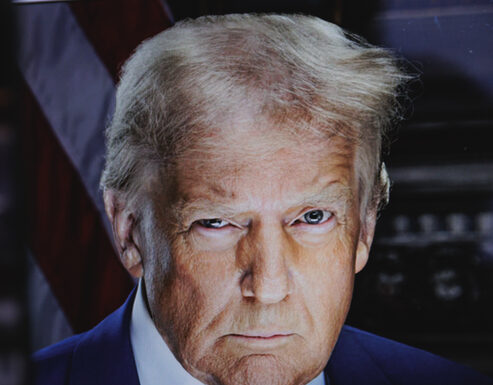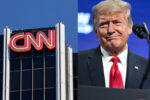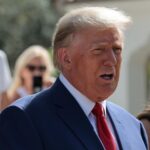President Donald Trump engaged in a heated exchange with CNN White House correspondent Alayna Treene during a flagpole installation ceremony at the White House on June 18, 2025. Trump dismissed CNN as fake news and questioned its viewership after Treene attempted to ask about divisions among his supporters regarding potential U.S. involvement in the Israel-Iran conflict.
The incident took place on the South Lawn as Trump oversaw the installation of new flagpoles. When Treene began her question by mentioning the divided opinions among his supporters, Trump interrupted to ask her media affiliation. Upon learning she was from CNN, Trump characterized the network as fake news and remarked, “Fortunately nobody watches”.
When Treene continued with her inquiry about the concerns of his supporters, Trump responded with personal remarks, asking, “Do you ever ask a positive question at CNN?” He asserted that his supporters are more devoted to him now than during the election, citing electoral victory statistics.
This exchange reflected Trump’s strategy of challenging the credibility of news organizations rather than directly addressing policy issues. Such an approach has been a consistent feature of his media interactions, often diverting attention from policy matters while emphasizing perceived media bias.
The confrontation occurred amidst growing tensions within Trump’s political base over his administration’s increasingly assertive stance toward Iran. Prominent conservative voices, including Tucker Carlson and Steve Bannon, have criticized Trump’s Iran policy, leading to what sources describe as a division among MAGA supporters. Trump dismissed the idea of any split among his supporters.
Recent polling data suggests that Trump’s claims of unwavering support may be exaggerated. Fifty percent of Americans view Iran as an enemy to the U.S.; 25% see it as unfriendly, and 5% consider it an ally or friendly.
Only 16% of Americans believe the U.S. military should be involved in the Israel-Iran conflict; 60% oppose involvement, and 24% are unsure.
Majorities of Democrats (65%), Independents (61%), and Republicans (53%) oppose U.S. military intervention in Iran, challenging Trump’s assertion of a unified base supporting his foreign policy.
Trump’s confrontational stance toward CNN is part of a broader pattern of contentious interactions with mainstream media. During his current term, he has frequently clashed with CNN reporters, including Kaitlan Collins and Jim Acosta, often questioning the network’s credibility and viewership.
The administration has been considering military action against Iranian nuclear facilities, which would require specialized bombs capable of targeting underground sites. The president has expressed uncertainty about proceeding with such strikes, contributing to the divisions among his supporters that Treene sought to explore.
Brian Glenn, a correspondent for Real America’s Voice and partner to Representative Marjorie Taylor Greene, attempted to reframe Treene’s question more favorably for Trump. Glenn suggested that while Trump’s base would remain loyal, some supporters were concerned about prolonged military engagement. Trump assured there would be no long-term war while maintaining a firm stance on Iran.
The flagpole ceremony was intended as a symbolic gesture, with Trump announcing “It is my Great Honor” to install the flagpoles, which he claimed to have personally funded as a gift to the American people. However, the event provided a platform for media questions, where Trump’s responses focused more on media criticism than on policy.
The encounter with Treene came as Trump faces pressure from both ends of his political spectrum. Republican hawks advocate for decisive action against Iran, while isolationists within the MAGA movement worry about involvement in another Middle Eastern conflict. This political tension presents a complex dynamic for Trump in navigating foreign policy decisions.
During the exchange, Trump also touted his electoral success, claiming victories in all seven swing states and more districts than his opponent, using these statistics to deflect from questions about divisions among his supporters.
The encounter highlighted how Trump views press interactions as opportunities for political theater rather than substantive policy discussions, particularly when faced with questions that challenge his narrative of unity among supporters.








